Over 75% of all orchids sold worldwide are Phalaenopsis varieties, and there’s a compelling reason for their popularity. You’ll find these elegant moth orchids thriving in homes across every continent, adapting beautifully to indoor conditions with their graceful arching stems and weeks-long blooming cycles. If you’re curious about transforming your living space with these stunning plants, you’ll want to understand exactly what makes them the go-to choice for both novice and experienced growers alike.
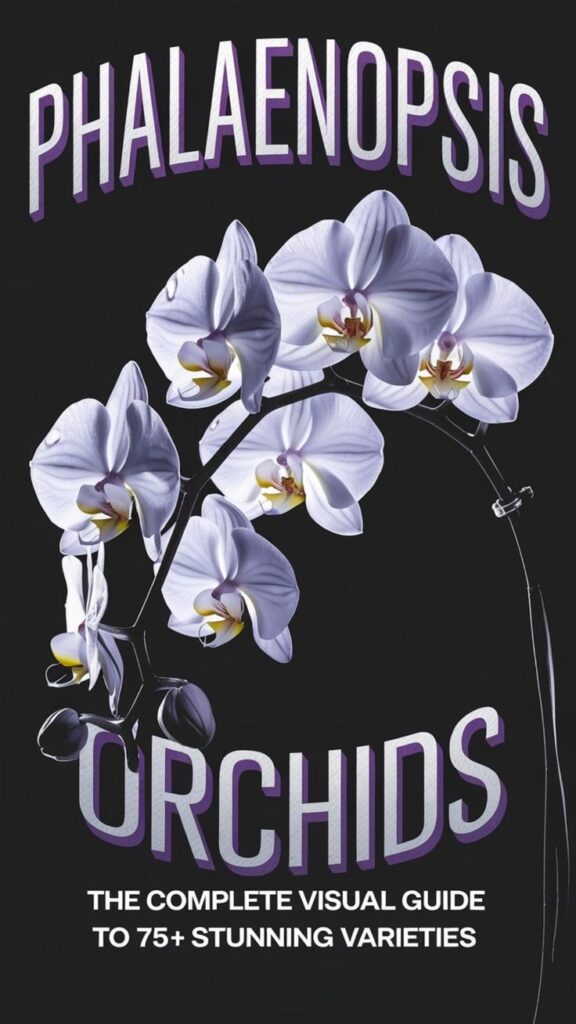
Contents
- 1 Origins and Natural Habitat of the Moth Orchid
- 2 Phalaenopsis Orchid Varieties
- 2.1 Phalaenopsis amabilis
- 2.2 Phalaenopsis amboinensis
- 2.3 Phalaenopsis aphrodite
- 2.4 Phalaenopsis bellina
- 2.5 Phalaenopsis cornu-cervi
- 2.6 Phalaenopsis deliciosa
- 2.7 Phalaenopsis equestris
- 2.8 Phalaenopsis fasciata
- 2.9 Phalaenopsis gigantea
- 2.10 Phalaenopsis hieroglyphica
- 2.11 Phalaenopsis lindenii
- 2.12 Phalaenopsis micholitzii
- 2.13 Phalaenopsis philippinensis
- 2.14 Phalaenopsis pulchra
- 2.15 Phalaenopsis schilleriana
- 2.16 Phalaenopsis stuartiana
- 2.17 Phalaenopsis tetraspis
- 2.18 Phalaenopsis venosa
- 2.19 Phalaenopsis violacea
- 3 Essential Care Requirements for Phalaenopsis
- 4 Color Varieties and Bloom Patterns
- 5 Optimal Growing Conditions at Home
- 6 Common Problems and Solutions
- 7 Reblooming Tips and Techniques
- 8 Propagation Methods and Best Practices
Origins and Natural Habitat of the Moth Orchid
Phalaenopsis orchids, commonly known as moth orchids, originally hail from the tropical regions of Southeast Asia, including countries like the Philippines, Indonesia, and southern China. You’ll find these epiphytes growing naturally at elevations between 1,000 and 4,000 feet, often clinging to tree branches in shaded rainforest areas.
In their native habitat, they’ve adapted to warm, humid conditions with temperatures ranging from 65-85°F. You’ll notice they don’t grow in soil but rather attach their roots to tree bark, gathering moisture and nutrients from the air and rainfall. This natural growing pattern explains why you shouldn’t plant them in regular potting soil at home.
Phalaenopsis Orchid Varieties
Phalaenopsis amabilis
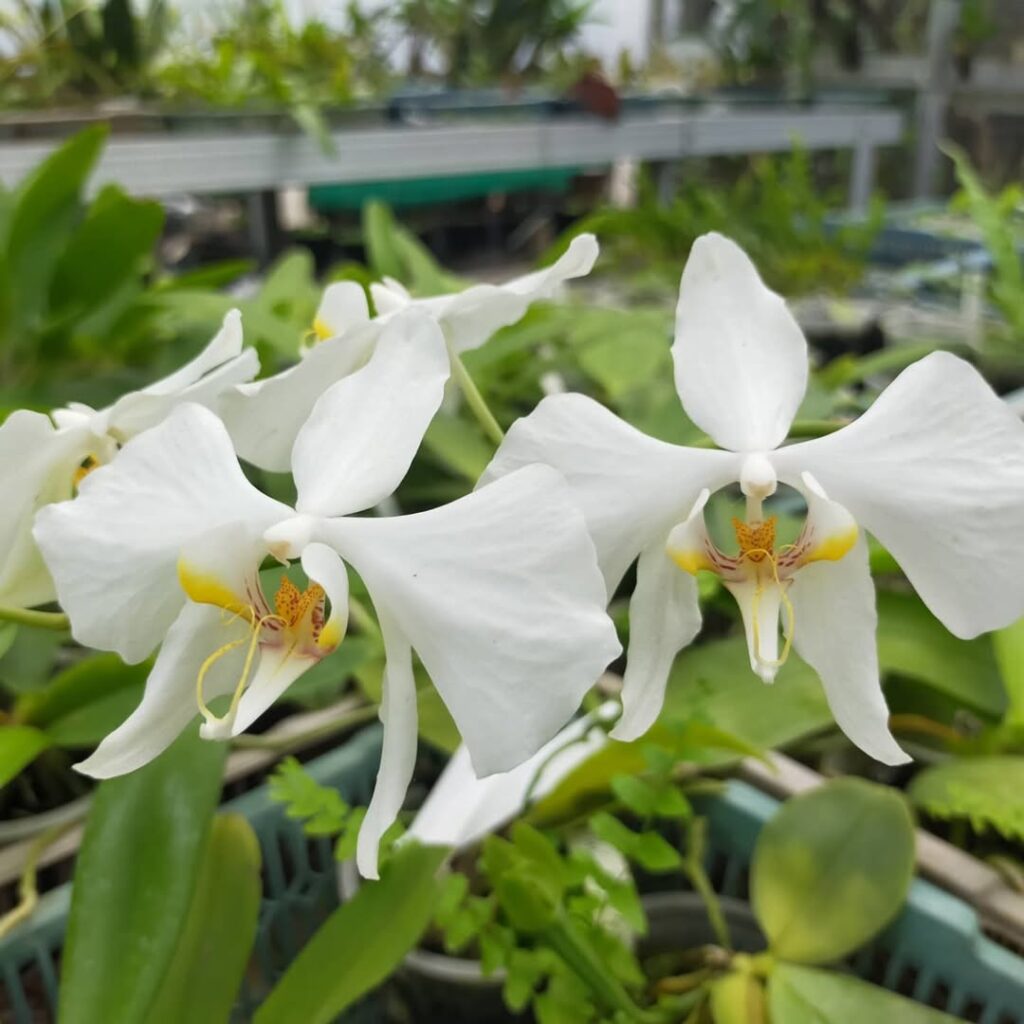
Known as the Moon Orchid, this species features elegant white blooms and is a symbol of beauty and charm.
Phalaenopsis amboinensis

Native to Indonesia, this orchid features creamy yellow flowers with bold red markings.
Phalaenopsis aphrodite

A stunning orchid with pristine white flowers, often referred to as the “Goddess of Love” orchid.
Phalaenopsis bellina
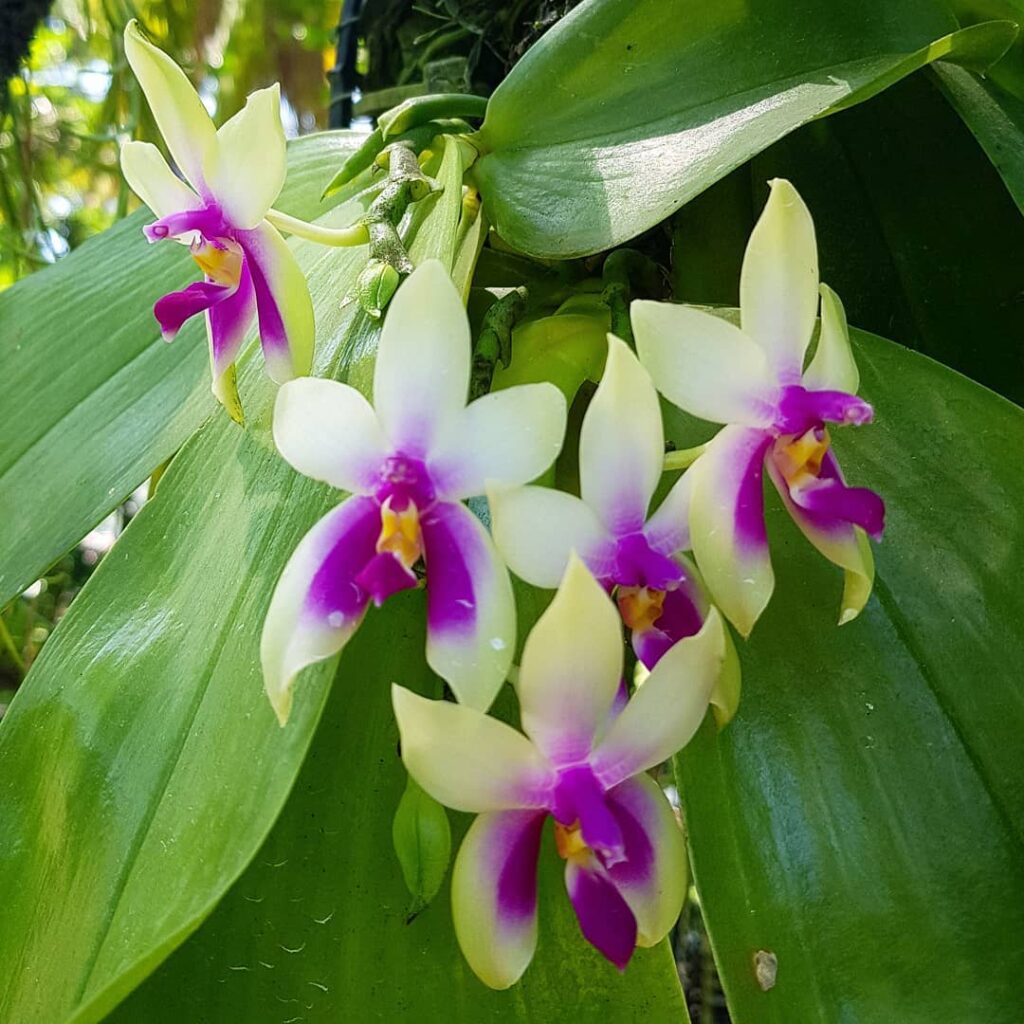
Native to Borneo, this species is admired for its waxy, fragrant flowers in shades of purple and green.
Phalaenopsis cornu-cervi
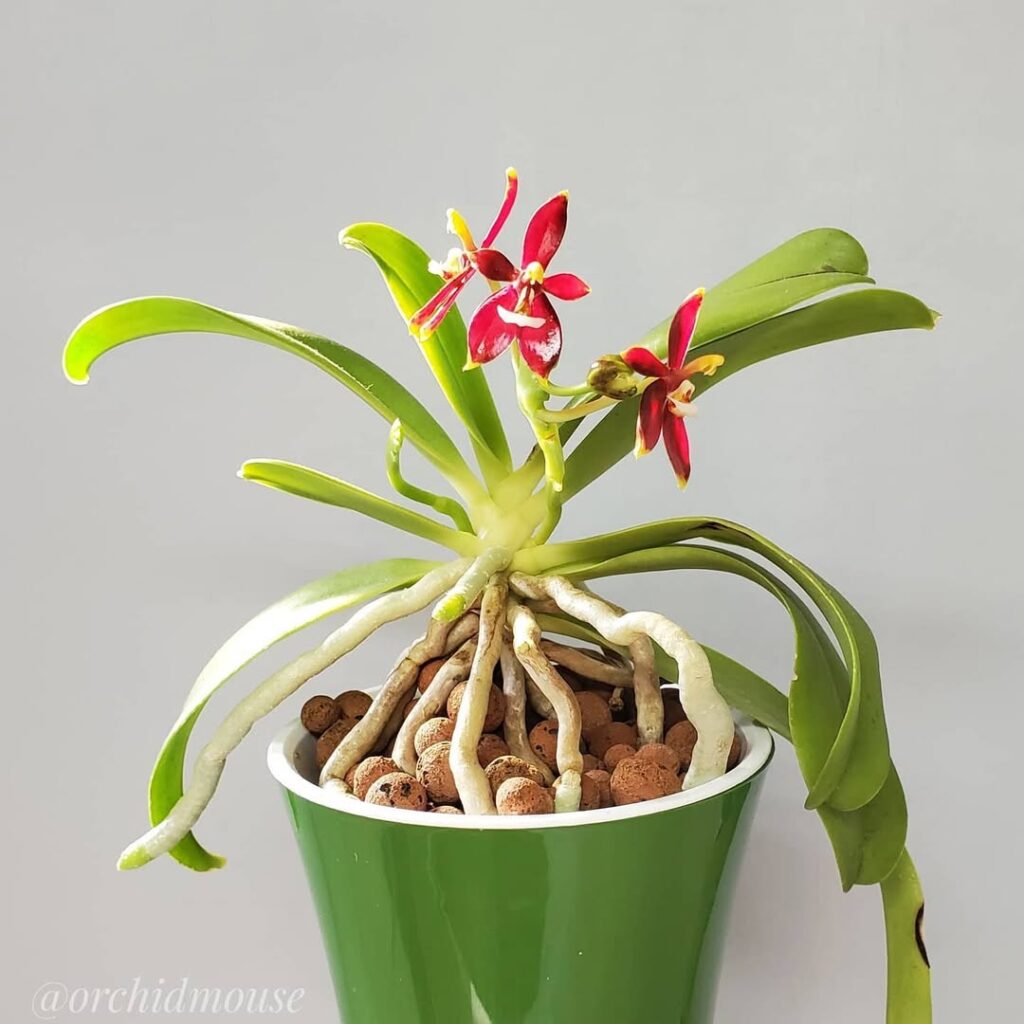
This unique species has star-shaped flowers in shades of yellow and red, resembling deer antlers.
Phalaenopsis deliciosa
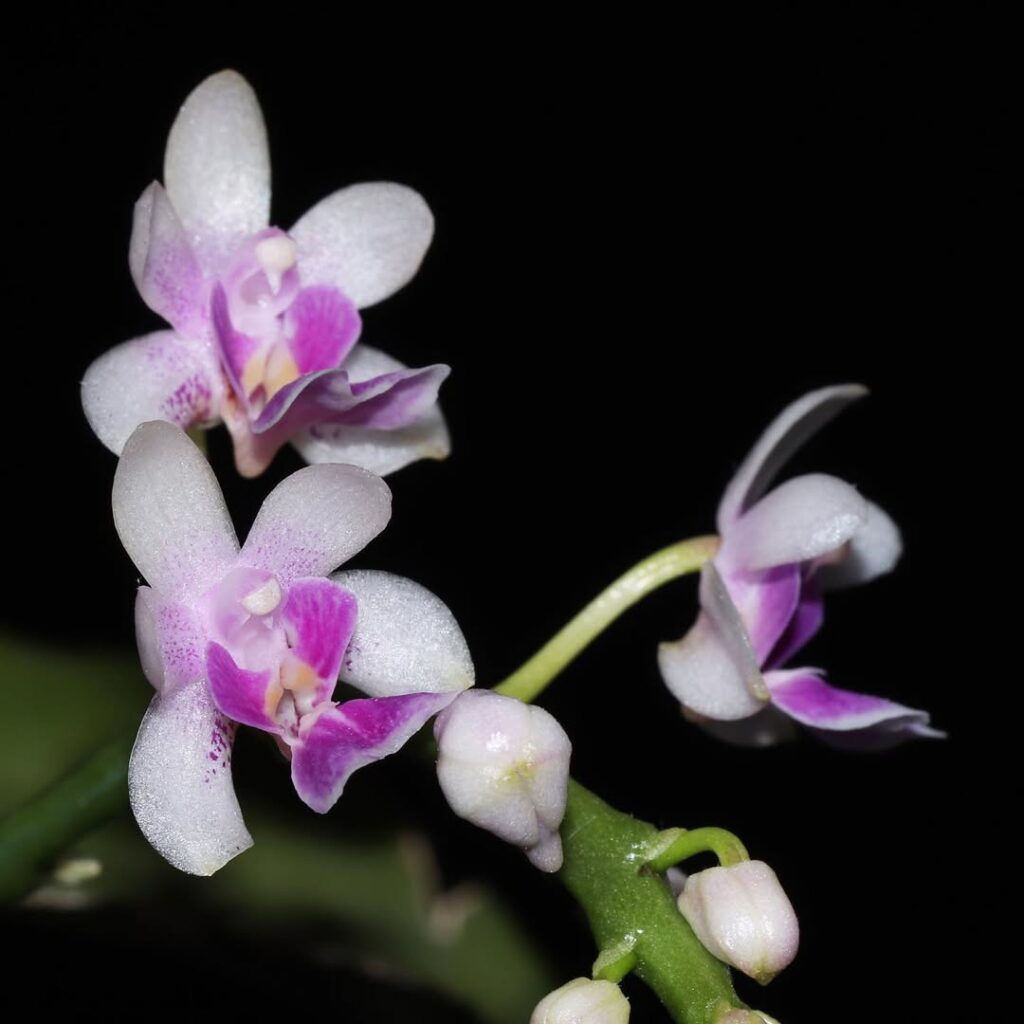
A miniature orchid with tiny, fragrant flowers in shades of white and pink.
Phalaenopsis equestris
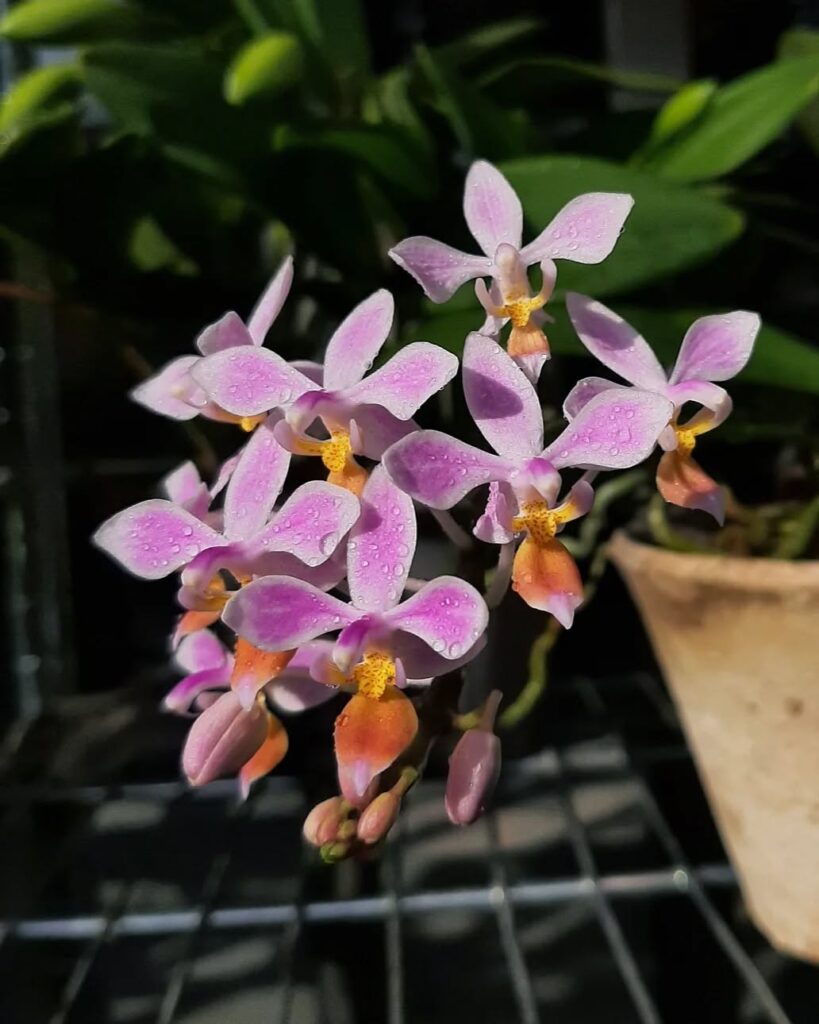
A dainty orchid with small, vibrant flowers ranging from pink to purple, perfect for beginners.
Phalaenopsis fasciata
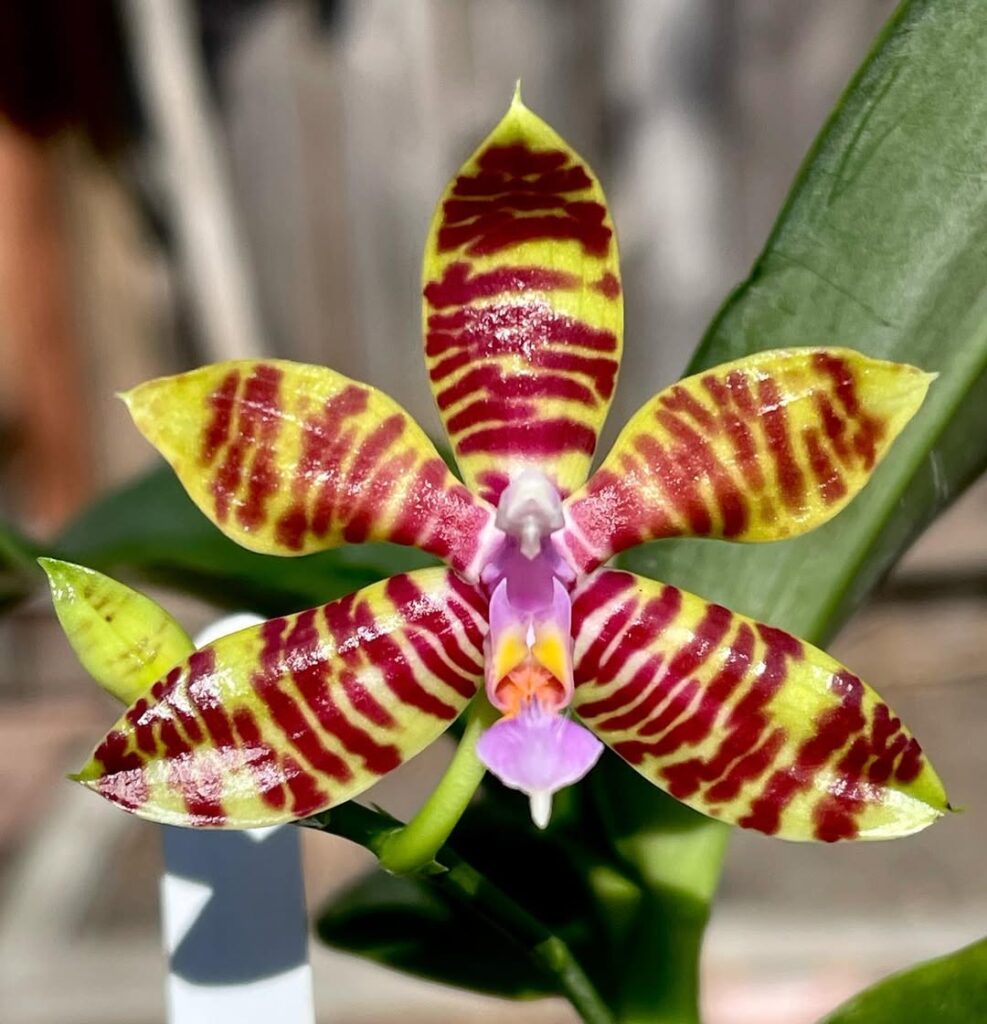
A charming species with golden-yellow flowers and red stripes, native to the Philippines.
Phalaenopsis gigantea
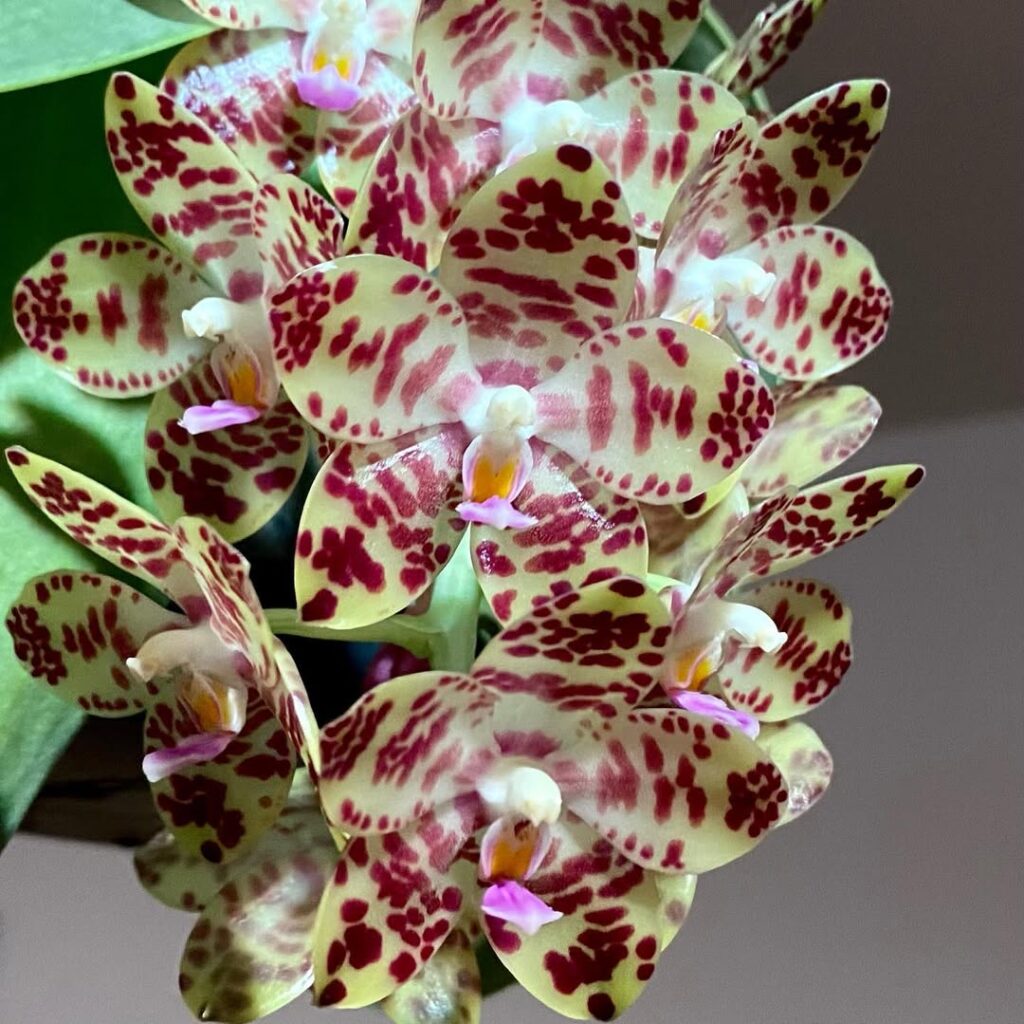
The largest of the Phalaenopsis species, it boasts massive leaves and creamy flowers with red spots.
Phalaenopsis hieroglyphica
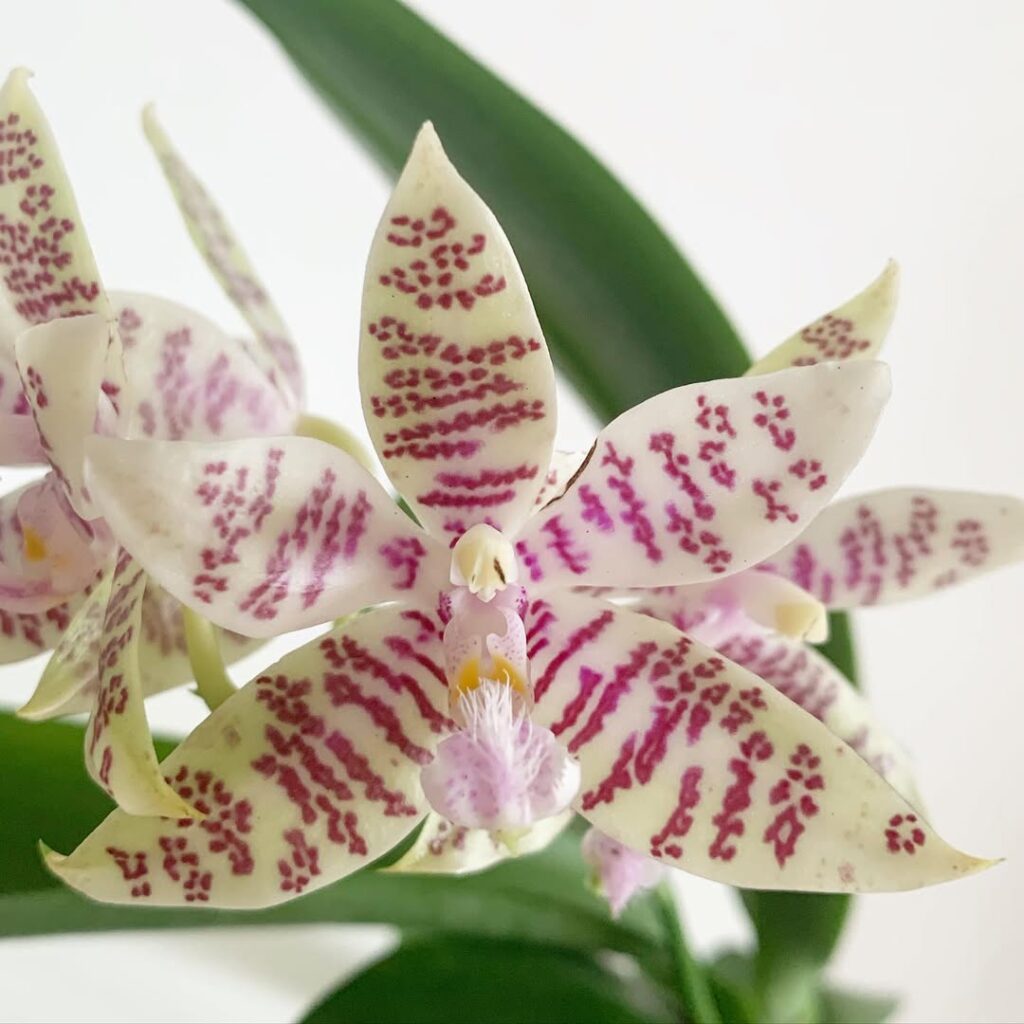
This species is named for its intricate, hieroglyph-like patterns on its creamy white petals.
Phalaenopsis lindenii
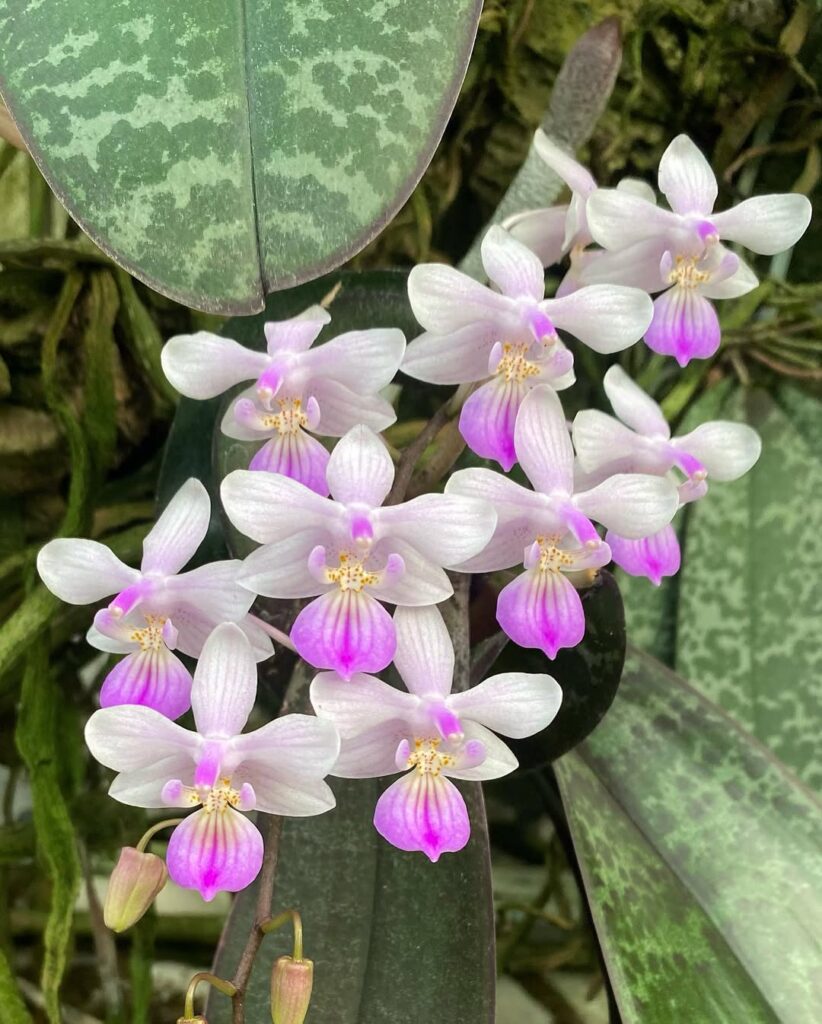
A rare species with delicate pink flowers and a unique lip structure.
Phalaenopsis micholitzii
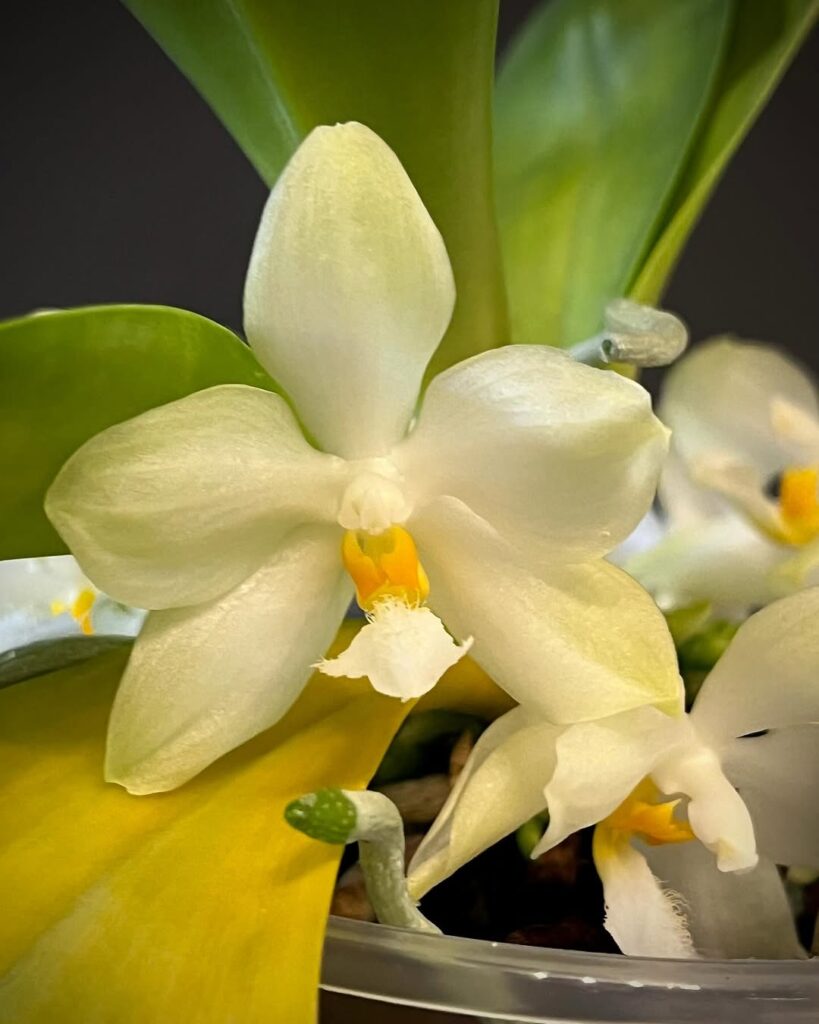
A rare species with creamy white flowers and a subtle greenish hue.
Phalaenopsis philippinensis

A rare species from the Philippines, admired for its long, cascading sprays of white flowers.
Phalaenopsis pulchra
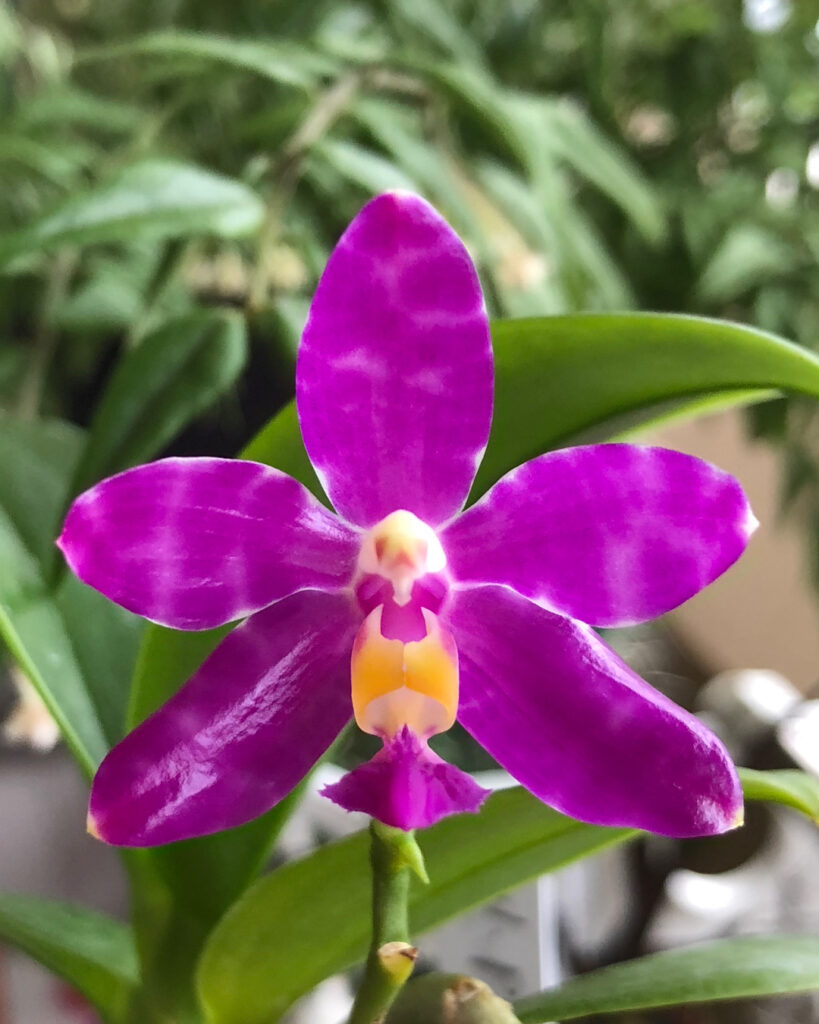
This species lives up to its name, meaning “beautiful,” with its vibrant purple blooms.
Phalaenopsis schilleriana
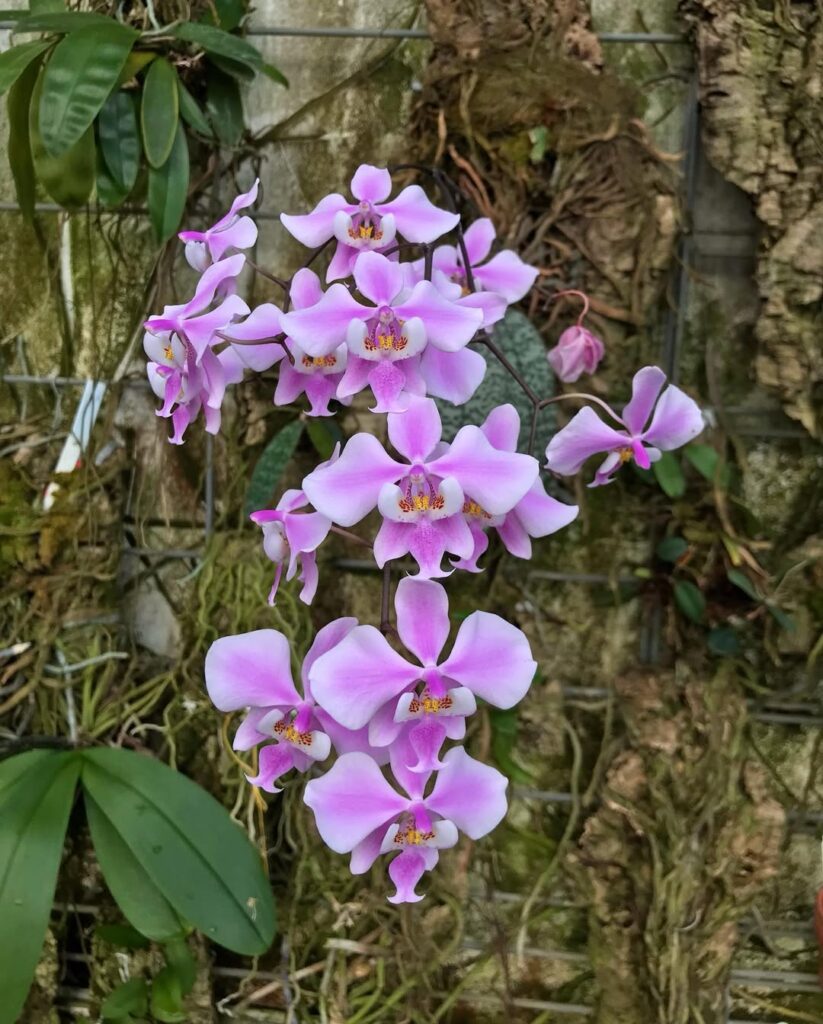
Famous for its mottled leaves and fragrant pink flowers, it adds a touch of elegance to any collection.
Phalaenopsis stuartiana
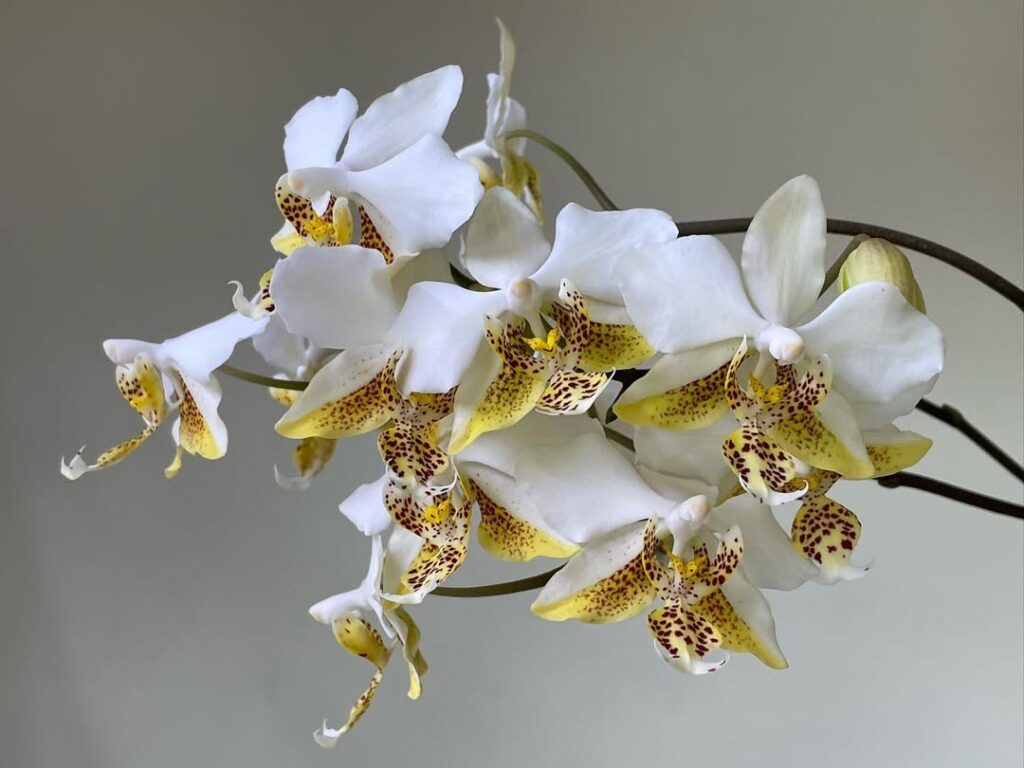
Known for its speckled flowers and cascading sprays, this species is a favorite among collectors.
Phalaenopsis tetraspis
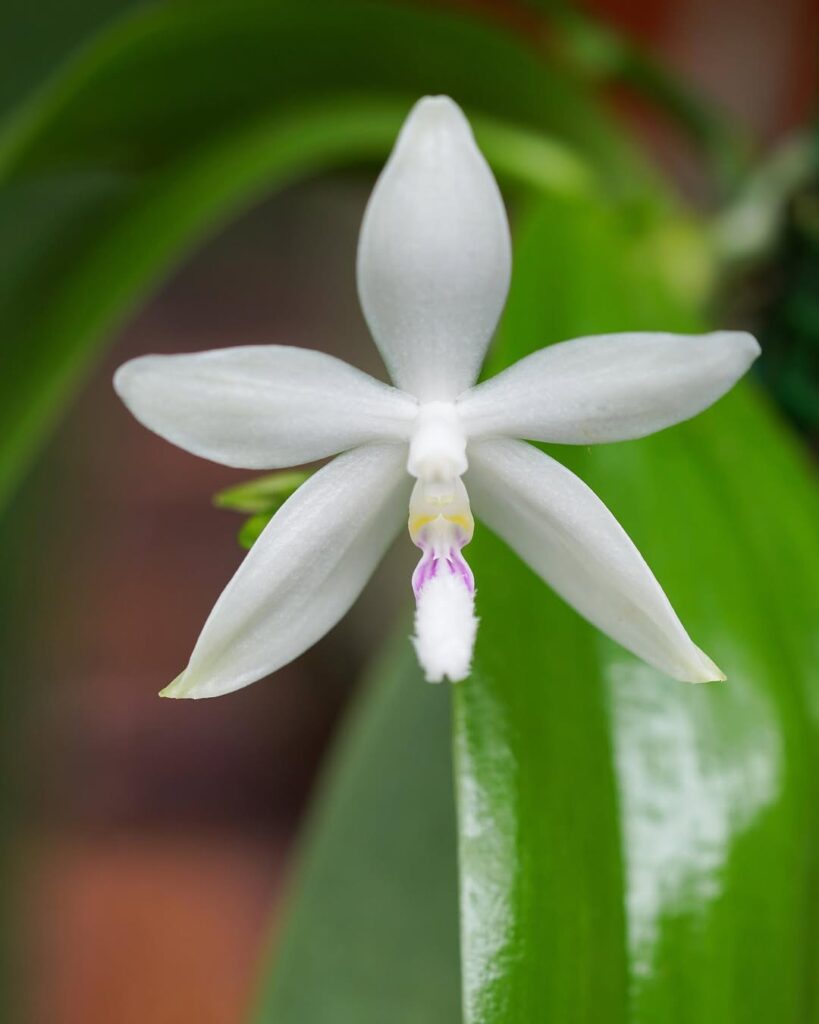
Known for its unpredictable flower patterns, with petals that can be white, red, or a mix of both.
Phalaenopsis venosa
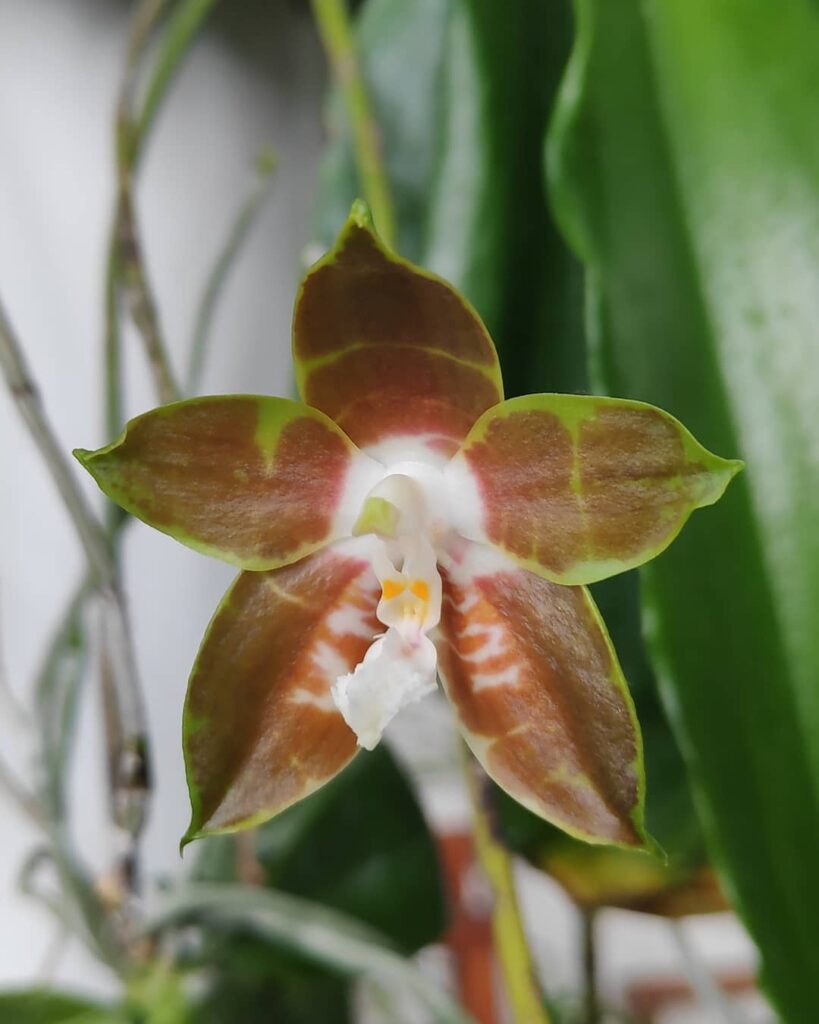
A striking species with golden-yellow flowers and intricate red veining.
Phalaenopsis violacea
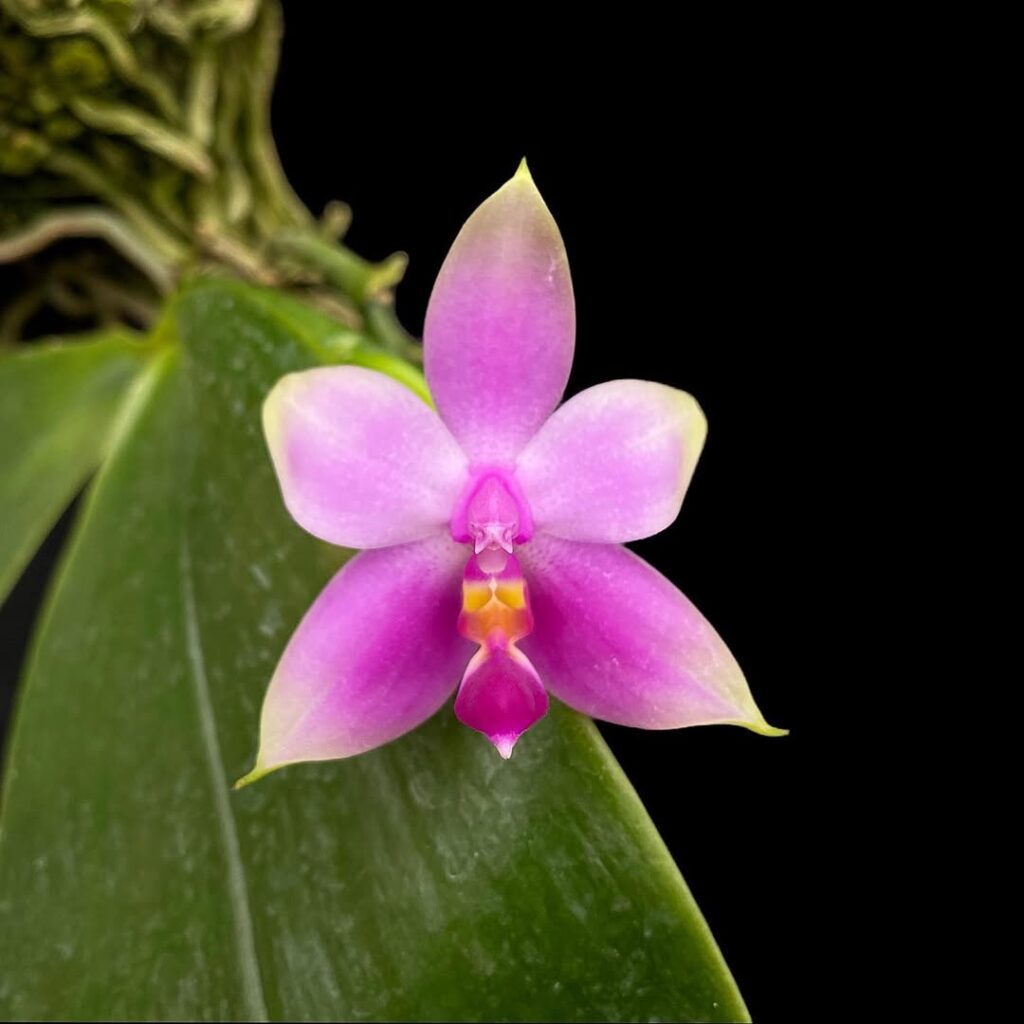
A fragrant species with vibrant purple flowers, native to the Malay Peninsula and Sumatra.
Essential Care Requirements for Phalaenopsis
If you’re ready to master Phalaenopsis care, you’ll need to understand three key elements: proper lighting, consistent moisture, and the right growing medium. Your moth orchid will thrive in bright, indirect light with temperatures between 65-85°F (18-29°C), coupled with 50-70% humidity. For best results, you’ll want to pot your orchid in a specialized orchid mix that combines fir bark, charcoal, and sphagnum moss to provide both excellent drainage and moisture retention.
Light and Temperature Needs
Like many indoor plants that originated in tropical regions, moth orchids thrive in bright, indirect light while avoiding harsh direct sun exposure. You’ll want to place them near east or north-facing windows, where they’ll receive gentle morning light but be protected from intense afternoon rays.
Temperature-wise, your Phalaenopsis will be happiest between 65-80°F during the day and about 10 degrees cooler at night. They’ll tolerate brief temperature fluctuations, but you should keep them away from cold drafts and heating vents. For ideal blooming, maintain nighttime temperatures around 55-65°F for about two weeks during fall – this temperature drop triggers their natural flowering cycle.
Watering and Humidity Tips
Along with proper light and temperature conditions, mastering the art of watering is key to keeping your moth orchid thriving. Water your Phalaenopsis thoroughly when the growing medium feels dry about 1 inch below the surface, typically every 7-10 days.
Don’t let water collect in the crown or between leaves, as this can lead to rot. Instead, water in the morning and use room-temperature water, allowing excess to drain completely through the pot’s holes.
Maintain 50-70% humidity by placing your orchid on a humidity tray filled with pebbles and water, or use a humidifier nearby. During winter heating, you’ll need to monitor humidity more closely.
Potting Mix Selection
Choosing the right potting mix can make or break your Phalaenopsis orchid’s success, since these epiphytes need excellent drainage and airflow around their roots.
You’ll want to use a specialized orchid mix containing large chunks (1/2 to 3/4 inch) of bark, usually fir or pine, combined with perlite and charcoal in a 3:1:1 ratio. Don’t use regular potting soil, as it’s too dense and retains excess moisture.
For long-lasting results, add a handful of sphagnum moss to your bark mix, which helps maintain consistent moisture without waterlogging. Replace the potting mix every 18-24 months when it starts breaking down and becoming compacted.
Color Varieties and Bloom Patterns
The spectacular world of Phalaenopsis orchids showcases an impressive palette of colors and patterns, from pure whites to deep burgundies. You’ll find solid colors, speckled varieties, and striking bi-colored blooms that can span 2-4 inches across.
Common varieties include classic white flowers with yellow centers, pink-streaked petals, and candy-striped patterns. You’ll also encounter rare varieties featuring electric blue hues, tiger-striped patterns, and watercolor-like gradients.
Most Phalaenopsis blooms display a symmetrical pattern, with three outer petals and three inner petals, including a distinctive lip. The patterns can range from subtle spots to bold stripes, often intensifying toward the flower’s center.
Optimal Growing Conditions at Home
Ready to nurture your Phalaenopsis orchid with ideal growing conditions at home? You’ll need to understand the basics of light, temperature, watering, humidity, and the right growing medium to help your orchid thrive. Let’s explore these essential care requirements, starting with how to create the perfect environment for your elegant bloomer.
Light and Temperature Requirements
Maintaining proper light and temperature conditions stands as the cornerstone of successful Phalaenopsis orchid care. You’ll want to place your orchid in bright, indirect light, ideally near an east-facing window where it’ll receive morning sun. Direct afternoon sunlight can scorch the leaves, so use sheer curtains if needed.
These orchids thrive in temperatures between 65-85°F (18-29°C) during the day and prefer a slight drop at night to 60-65°F (15-18°C). If you’re comfortable in your home, your Phalaenopsis likely is too. Just keep it away from drafty windows and heating vents, which can cause temperature fluctuations that stress the plant.
Watering and Humidity Needs
While mastering the art of watering Phalaenopsis orchids can seem tricky, following a consistent routine yields the best results. You’ll want to water thoroughly once the potting medium feels dry about 1 inch below the surface, typically every 7-10 days.
Don’t let water collect in the crown, as this can lead to rot. Instead, water in the morning and guarantee proper drainage through the pot’s holes. These orchids thrive in 50-70% humidity, so you’ll need a humidity tray or small humidifier in dry environments.
Misting isn’t recommended, as it can promote fungal growth. During winter, reduce watering frequency by about 30% while maintaining consistent humidity levels.
Soil and Container Selection
Successful Phalaenopsis orchid growth depends on two critical elements: specialized potting medium and proper containers.
You’ll need a coarse, well-draining mix combining fir bark, sphagnum moss, and perlite in a 5:3:2 ratio. Don’t use regular potting soil, as it’ll suffocate your orchid’s roots.
Choose a clear plastic pot with plenty of drainage holes, ideally 4-6 inches in diameter. The transparent container lets you monitor root health and moisture levels. If you’re using a decorative outer pot, make sure it’s 1-2 inches wider than your growing container and has adequate drainage.
Always repot in fresh medium every 18-24 months when the bark starts breaking down.
Common Problems and Solutions
Even the most attentive orchid growers face common issues with their Phalaenopsis plants. You’ll likely encounter yellow leaves, root rot, or flower buds dropping prematurely. When leaves turn yellow, reduce watering to once every 10 days and check for root damage.
Root rot, identified by brown, mushy roots, requires immediate attention. Remove affected roots with sterilized scissors, dust with cinnamon powder, and repot in fresh medium. If flower buds drop before opening, your orchid’s likely experiencing temperature fluctuations or drafts.
To prevent pest problems, inspect leaves weekly and treat any sticky residue with 70% isopropyl alcohol on a cotton swab.
Reblooming Tips and Techniques
Getting your Phalaenopsis to rebloom after addressing health issues can feel like revealing a special achievement. To trigger new flower spikes, create a 10-15°F temperature drop between day and night for two weeks, ideally in autumn when days grow shorter.
Once you notice a new spike emerging, maintain consistent moisture and switch to a balanced 10-10-10 fertilizer every two weeks. Position your orchid where it’ll receive bright, indirect light for 12-14 hours daily.
Don’t cut old spikes unless they’re brown and dried. Green spikes often produce secondary branches with new blooms, especially if you trim just above a node.
Propagation Methods and Best Practices
While Phalaenopsis orchids don’t naturally produce offshoots like some other orchid varieties, you can propagate them through keiki development and tissue culture.
To encourage keiki growth, apply keiki paste containing cytokinin hormones to a dormant eye on the flower spike. Keep the temperature between 75-85°F and maintain 60% humidity. Within 2-3 months, you’ll notice small plantlets forming.
For tissue culture propagation, you’ll need sterile lab conditions and specialized equipment. It’s best to leave this method to professionals, as it requires precise sterile techniques and specific growth mediums to successfully clone your orchid.
